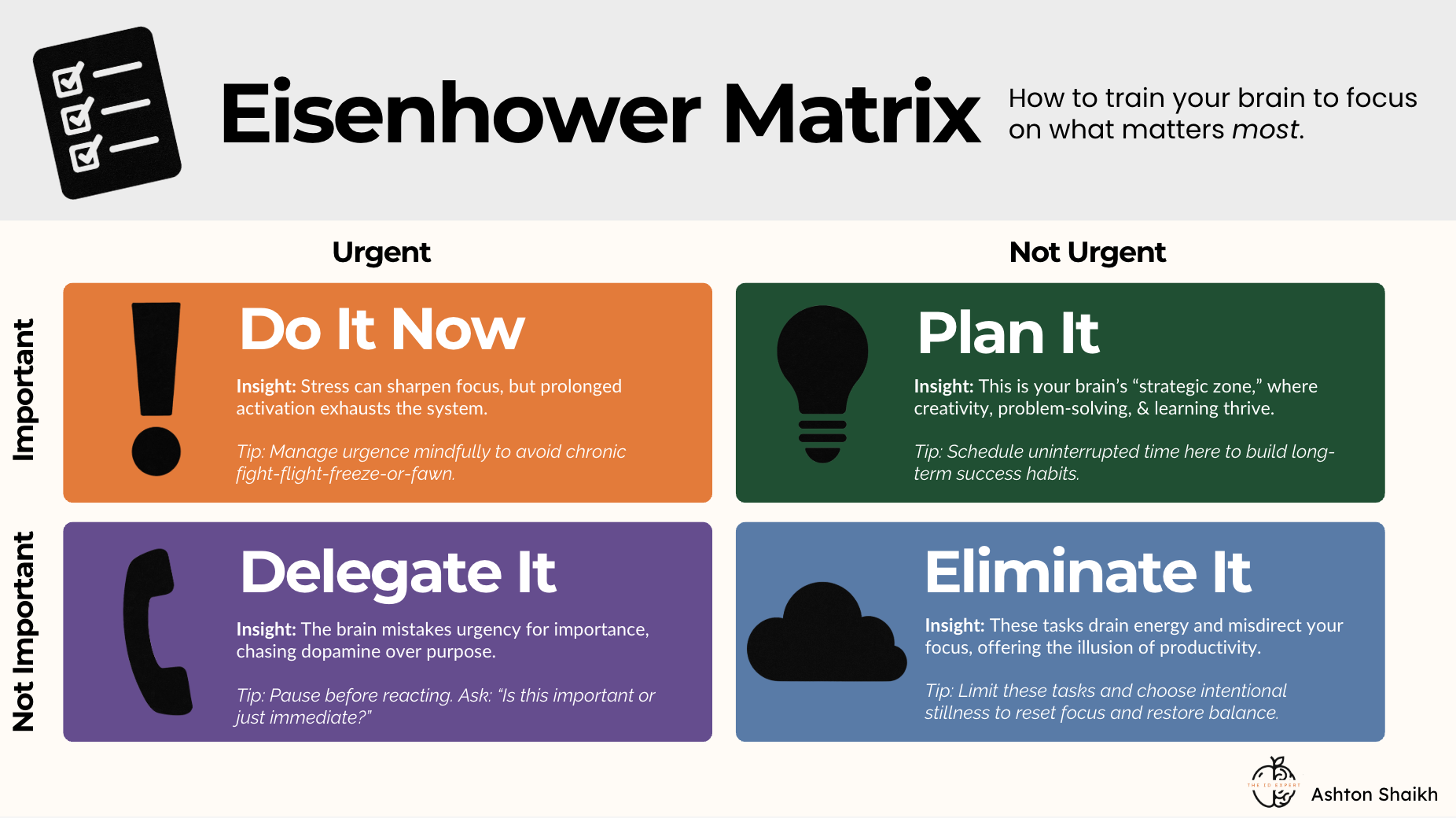4 Ways the Brain Decides What Deserves Attention
How neuroscience can help you design focus instead of chasing it
We’ve all had those days when we’re working hard but not really moving forward. You cross off tasks, respond to messages, and stay busy, but at the end of the day, the progress just doesn’t match the effort.
You’re not doing anything wrong. The brain’s default mode is reaction before reflection.
The limbic system loves urgency, alerts, and quick rewards. It’s the part of the brain that lights up when something feels immediately important: a notification, an email, or a sudden “fire to put out.”
The prefrontal cortex, on the other hand, handles planning, focus, and long-term thinking. It helps you set goals, prioritize, and connect today’s actions to tomorrow’s results.
The two are constantly negotiating who’s in charge, and that’s where focus can get lost.
Attention as a Design Element
As an instructional designer, I treat attention as something we can design for, not something we should expect by default.
In learning and in work, attention is a system influenced by emotion, context, and environment. That’s why I often use the Eisenhower Matrix as a cognitive framework to visualize how the brain prioritizes tasks.
Once people see how their brains naturally sort urgency and importance, they can start to design for focus instead of fighting distraction.
Do It Now: Managing the Urgency Zone
Urgency activates the amygdala, the part of the brain that handles emotional response and quick action. It’s powerful for short bursts of energy or true deadlines, but constant activation drains mental resources.
If everything feels urgent, the brain never leaves “fight-or-flight” mode. That’s when decision fatigue, irritability, and burnout creep in.
Design Insight:
Use urgency strategically. Save this zone for real deadlines or high-impact tasks that truly move a project forward. Then, give your brain a chance to reset.
Plan It: Protecting the Prefrontal Zone
The prefrontal cortex is where deep work happens: problem-solving, creativity, and strategic thinking. It’s the brain’s “executive control center,” and it thrives on uninterrupted time.
When this zone is protected, learning and innovation accelerate. When it’s constantly interrupted, productivity plummets.
Design Insight:
Block intentional focus time for this kind of thinking. Treat it like a critical meeting, because it is! This is where your best problem-solving and creative insight live.
Delegate It: Challenging the Dopamine Loop
Dopamine rewards action, not accuracy. That’s why crossing small tasks off a list feels so satisfying … even when those tasks don’t matter.
The brain often mistakes “urgent” for “important” because it craves the reward of completion.
Design Insight:
Before reacting, take one pause. Ask: “Does this truly need me?” Delegation is a form of focus. It lets you reserve mental energy for decisions that align with goals, not just activity.
Eliminate It: Making Space for Recovery
Busywork often gives the illusion of productivity. But the more we fill our time with low-value tasks, the less room we leave for creative thought.
Real recovery activates the Default Mode Network (DMN), the part of the brain that connects ideas, fuels insight, and restores clarity.
Design Insight:
Build intentional stillness into your day. That could mean short breaks, quiet walks, or transitions that allow the brain to reset. Recovery exists within the design, sustaining focus and clarity.
Seeing the Pattern
Mapping a week through these four quadrants makes patterns visible fast. You start to see where energy flows, where it leaks, and where it resets.
Once you can see those patterns, attention becomes data, something you can analyze, adjust, and intentionally redesign.
That awareness is what makes lasting change possible.
Final Thought
The Eisenhower Matrix isn’t just a productivity tool. It functions as more than a productivity tool, a cognitive mirror that shows how the brain distributes attention and energy.
When you design for how the brain works, focus stops being a struggle and becomes a skill.
Try this:
Take five minutes today to map your to-do list using the four quadrants. Then ask yourself: Where does my best thinking happen, and how can I protect that space?


